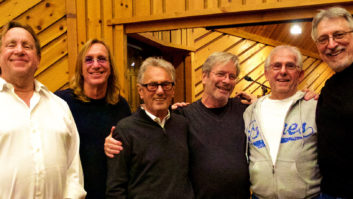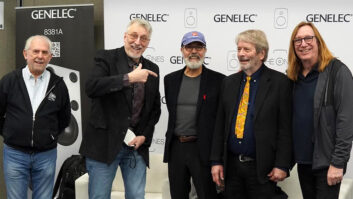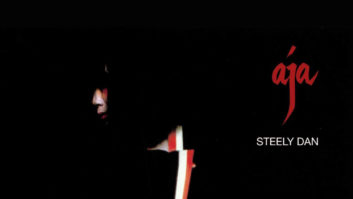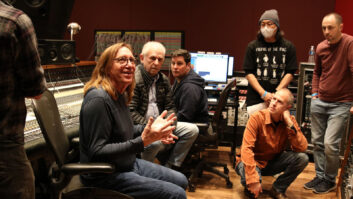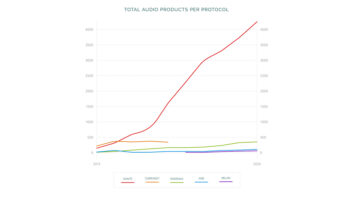This month, the METAlliance Report is taking a different tack. We call it “METABollocks,” and the idea is that we get to sound off on the things that drive us, well … bollocks.
What studio aggravations drive you nuts? Share your pet peeves, irritations and head-shaking “how on Earth does this happen” observations with the METAlliance in the comment section at the end, and they may wind up in a future column!
One of our biggest bollocks generators is wall warts. I know they’re necessary, but do we really have to live like this? Take hard drives and their warts, for instance—how many of you have drawers filled with warts with no idea what hard drive chassis it goes with? Why can’t manufacturers put a label that lasts somewhere—anywhere—on the wart?
I know what you’re saying: “Well, you could put your own labels on.” Yes, I could, but most of them fall off over time, and that doesn’t help me with the dozens I already have with no dependable companion. Plus, the zillion different versions of that little connector—they really can’t settle on one or two? We probably have nine 12-volt wart supplies in a drawer, and whatever one you pick invariably doesn’t fit the unit in hand. And why aren’t they all center-pin positive (+)?
Okay, maybe you’ve been really conscientious from day one and couple the drive with its wart. How do you stack them? With the various sizes and cables, there’s no convenient way I’ve found to do it. So the wart goes in a drawer, never to be reunited with its mate. Not only do most of these drives come with some generic name on the label having nothing to do with the drive manufacturer, but they are actually missing the voltage and amp specs, or you need the magnifier app on your phone to read it. To that, we say, “METABollocks.”
Here’s another: It’s been nearly 15 years since the Recording Academy’s Producers & Engineers Wing released the document Recommendations for Delivery of Recorded Music Projects. If you haven’t read it, we encourage you to do so as it provides tons of useful information that standardizes recording practices. In the days of analog recording, labels on tape boxes and track sheets contained all the necessary information. Tapes had a reasonable shelf life that could be extended by baking, so most assets that are stored properly can be retrieved 50 or more years later. Compare that to a hard drive that may not spin up after only a few years and generally has been left in a cupboard with next to no labeling. Again, you can read the document for best practices.
The METAlliance Report: Critical Listening and Critical Evaluation, by George Massenburg, Jan. 30, 2019
But that’s not what this METABollocks is about. Some of us use Nuendo as our preferred workstation. We often have to send files out to those working on other types of workstations, to do overdubs and such. You all know which workstations we’re really referring to, right? Why is it so hard for users to then spot the reference files we send them and import them to their time-stamped origin? That way, when they overdub to our files, the overdub is done with a time stamp that relates to the original recording. Almost 100 percent of the time, when the overdubs are returned to us, they are off by an hour.
Want more stories like this? Subscribe to our newsletter and get it delivered right to your inbox.
For example, the Pro Tools default is to create a new session that starts at 01:00:00.000. It seems that the users of that workstation sometimes import the reference files and drop them in at the beginning of their newly created session—in other words, one hour off. We caught on to this problem years ago and began consolidating the reference files we send out back to zero. That way, it’s not too problematic to drag back the returned files and sync them with the project—but you shouldn’t have to do that, plus it can create other problems down the road. This brings us back to the deliverables document: It’s all in there and it’s stuff you should know! Read the document or METABollocks on you.
And our last: It’s great to get a call from someone saying they admire your work, relating their impressions of a project or two that you’ve worked on to create a great listening experience. The record made an impression for all the reasons it could; you did your job. That’s fabulous and rewarding. Unfortunately, they follow that with asking if you could work on their project for free—or close to it. If the project’s really that good, how can it not be worth what we need to sustain ourselves, too? And all too often, those freebie projects involve people who are the most difficult to work with. METABollocks!
METAlliance • www.metalliance.com
Recommendations for Delivery of Recorded Music Projects • www.grammy.com/technical-guidelines
The METAlliance—Al Schmitt, Chuck Ainlay, Ed Cherney, Elliot Scheiner, Frank Filipetti and George Massenburg, along with the late Phil Ramone—has the dual goals of mentoring through our “In Session” events, and conveying to audio professionals and semi-professionals our choices for the highest quality hardware and software by shining a light on products worthy of consideration through a certification process and product reviews in this column. Our mission is to promote the highest quality in the art and science of recording music.
